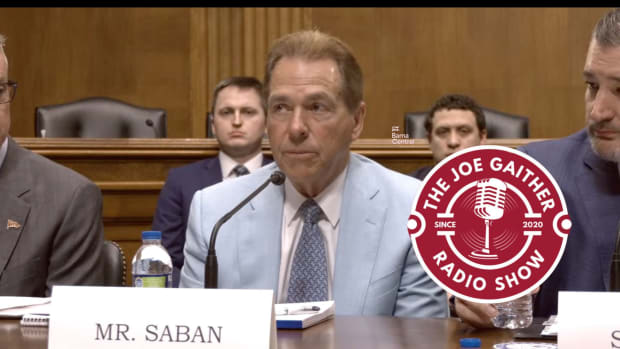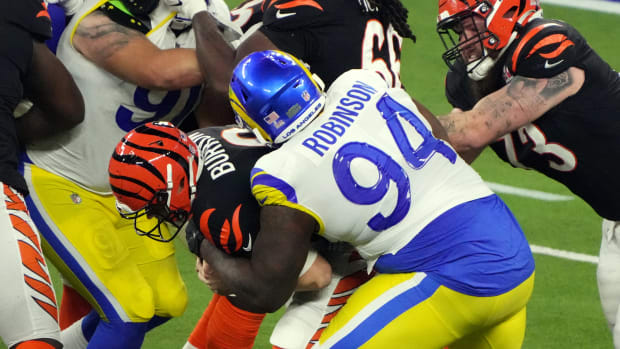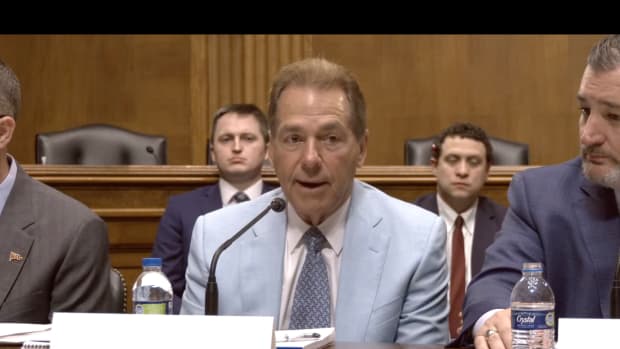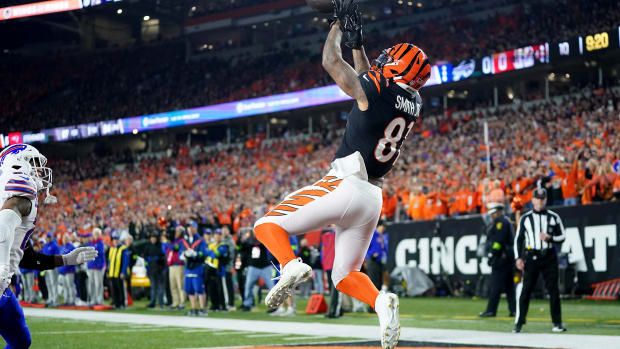Tua Tagovailoa confident Texas A&M's 12th Man won't make him, new center uncomfortable
TUSCALOOSA, Ala. — The question seemed to catch Tua Tagovailoa off guard.
Saturday afternoon, when No. 1 Alabama visits raucous Kyle Field, where it will face No. 24 Texas A&M, the quarterback will likely have a new center as redshirt junior Chris Owens is dealing with a knee injury.
Tagovailoa's obviously worked with redshirt junior Landon Dickerson throughout the fall, and the graduate transfer from Florida State started at center against New Mexico State.
But this will be a little different.
The 12th Man wasn't in play when he was snapping the ball at Bryant-Denny Stadium.
So just how long does it usually take for a quarterback to get used to a center?
"Um, I'm not too sure," Tagovailoa said. "I think that's something that's probably underlooked. I don't think as a quarterback you really think of that, but now that you've brought it up, and I'm really thinking about it, I'm not too sure. It's a good question.
"I think it's just something that's just day-to-day, progressively get better at. Like there's this thing I do, let's say the cadence is on two, so 'Ready, set, hut,' the top of my hand, the pressure would be an indicator to the center that you should snap the ball, like get ready to snap the ball. If we're going quick, regardless if they knew the count, the pressure, you know, with my hand would indicate that now you're going to snap the ball when I say 'go' this time. Just like getting reps with them and kind of telling them this is what I want, and you go from there."
Of course, it's easier in shotgun formation, where Alabama either likes to use a clap by the quarterback, a mix of cadences or does a version of a silent count when the crowd noise escalates.
Here are five other things Tagovailoa talked about prior to the Texas A&M game (Saturday, 2:30 p.m., CBS):
1] What have you leaned from playing in loud venues like this one?
"I've had experience going to a place like Texas A&M, and then prior to the LSU game [last year] we played at Tennessee, and Tennessee was actually pretty loud. So you kind of get a good gauge throughout, from my freshman year not being able to play to my sophomore [year and] being able to play in environments like that. I feel like you've kind of seen it all. So you've just got to adjust on the fly in environments like this."
2] As a mobile quarterback, when do you make the decision to run?
"Well, usually it's if you see an open lane. But when they're running two-man on defense, it's really hard for the defense to stop you, especially because they have no one spying. They're trying to get pressure on you, they're playing man in the back, two high safeties dropping out, if you vacate that entire middle with crossing routes and everybody crossing and clearing it out, it's hard [to defend]. You can't really do anything if you're a DC or a player, you just hope that you get enough pressure and your guys get to the quarterback in enough time. But it's really based off of feel."
3] There's been a lot of talk, especially from Nick Saban, about using ball control to wear opposing defenses down and giving your own defense more of a break. But you often score quickly. How do you balance that, try and get up a couple of scores and then try to slow it down?
“Our mindset offensively never changes, but it’s what Coach Saban …once Coach Saban steps in and says, ‘Okay, we’ve got to slow down the tempo.’ We kind of understand what he’s asking of us. That’s when we end up running the ball, maybe first, second down. Third down is really important. We really have to hope to extend the drive in that way. Then if we get another first down, we do the same thing. An eight-play drive is what would be more reasonable for Coach Saban with us on the field.”
4] What makes a quarterback uncomfortable?
“A lot of pressure. There are different things coming out you. Hard to see sometimes. A lot of movement. When you have to move out of the pocket to see something. They say playing in the SEC is close to the NFL. I can’t really tell. I wouldn’t be able to judge because I haven’t played in the NFL. But when something is open, it’s only open for so long. So if you have to move to buy time … once you get out you’ve got to start extending the play. You have to motion guys here, tell somebody to go dow, make a play that way.”
5] When is a receiver open and do you have to trust your receivers to make catches of anything you throw?
“Open for me is someone who has at least a little bit (spreads fingers about four inches apart). I don’t even know how to explain that. We have to be on the field or watch film, guys. We all have to watch film. ’Oh, yeah, that’s open.’ If you think that wasn’t open, then I can’t explain to you why it was open.”
Follow-up: Do you have to anticipate the receiver getting to where you throw it?
"Yes, depending on where the DB is. Sometimes the receiver just has to make plays, you know?”





